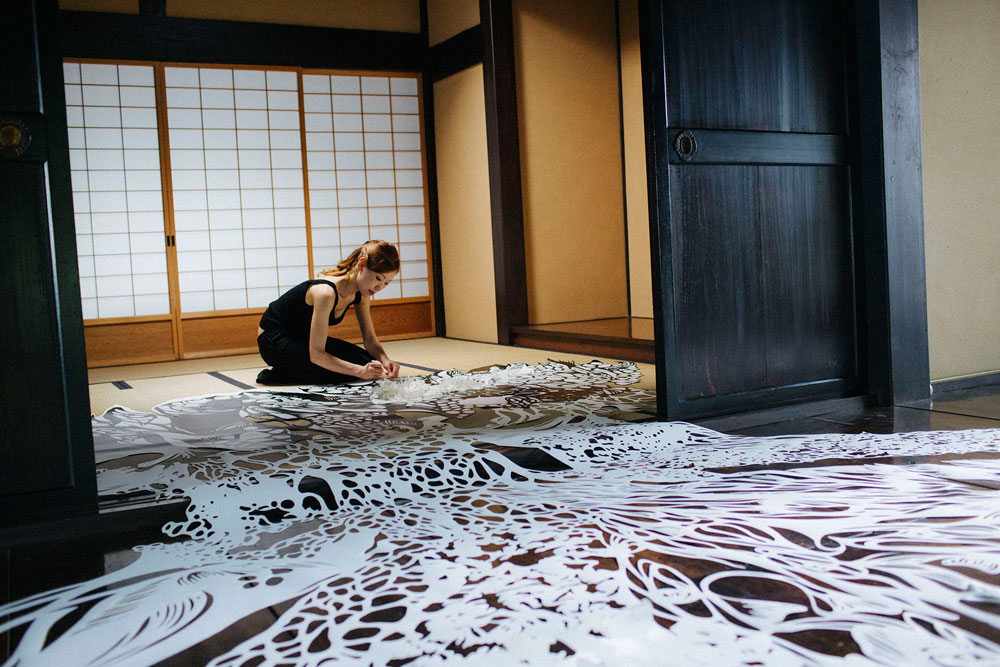At the Miata Lexus Plant in Kyushu, Japan, it isn’t uncommon to see a factory worker run his hand across one of the luxury cars as if grazing a blade of wheat in a Terrence Malick film, searching for flaws with only a sense of touch to guide them. The car maker takes great pride in hiring such specialists, known as Takumi, who have practiced their particular skill for so long that it’s become second nature, so it was only a matter of time before finding a way to give them the spotlight. But with the recent DOC NYC premiere of “Takumi,” they have done one better, presenting craftspeople in a variety of fields that have persevered at a time when the prospect of greater automation threatens to make them obsolete.
The task of finding these Takumi fell to producer Rupert Maconick, who set about looking for those who have accrued the 60,000 hours necessary to be considered a master at their craft and profile them in a most unusual way. While the version that was presented at DOC NYC ran just under an hour, viewers will have the option of eventually watching it online in a 60,000-hour form, accentuating the repetition and detail that goes into achieving perfection. Although that may be asking a lot from audiences, it is quite easy to lose track of time appreciating the handiwork of Shigeo Kiugei, a carpenter at one of Japan’s oldest architectural firms, Hisato Nakahigashi, a restauranteur who has turned foraging mountain vegetables into the foundation for the distinctive Michelin star restaurant Miyamasou in Kyoto, and Nahoko Kojima, who takes the art of kirie, an intricate practice of paper cutting, to a new level by creating innovative three-dimensional designs.
Buttressed by observations from various experts on craft from futurists to museum curators, “Takumi” examines what human skills will stand the test of time as computers grow more intuitive and capable of nuance by the day. Yet beyond just the artisans on display, there’s an inherent sensitivity in “Takumi” that suggests there remains a place for the human touch and a day after the film’s premiere at DOC NYC, Maconick spoke of how he developed the project and made sure it had a handmade feel.
How did this come about for you?
I have a production company called Saville Productions and we make a lot of film and television documentaries. We also do a lot of [projects] with brands, so this particular one came through Lexus, [which] wanted to celebrate the artisans and artisanship of Japan. They have Takumi working in their very high-tech factories, so they wanted to explore the balance between artisans and automation, but in order to do that, we [felt we] needed to make it a proper piece of entertainment and not just something about [Lexus]. If you want to think about it, everything is paid for by a brand, so the way to do things with brands, and we’ve done a lot of them now, is to create conversation around something that’s interesting, as opposed to just talking about the brand and making the brand the hero. So we had one of the directors of “Chef’s Table” – Clay Jeter and his team and it was very much in the process of how you would do “Chef’s Table,” not marketing or brand-driven, and we said we want to explore a range of different people in Japan who have different skills which take 60,000 hours to perfect.
How did you decide who to look for?
A big part of documentaries is research and we have a team of researchers/journalists and we looked at everyone and we found four people we thought would be appropriate. We needed to find people who had interesting stories and we were trying to find stories that weren’t the traditional things you would see about Takumi or traditional artisans in Japan. We [found one] of the oldest carpentry companies in the world – it’s 1400 years old, and each person does one specific thing within the team to build the house, so it was interesting exploring these people who, when everything else is speeding up, they’re happy slowing down. And then we cut the film together and then we went looking for the right experts to link the stories, otherwise it wouldn’t have come together.
It does coalesce around this idea that technology could make such craftspeople unnecessary. How did that come about as a theme?
The conversation here is really about artisanship and will artisanship continue in a continually automated world and the answer is yes. As jobs disappear and the world becomes more automated, creativity is going to rise to the top. More and more people are going to be looking for things like that and in the same way the slow movement of food took hold 20 or 30 years ago, I think you’re going to have people looking at the speed of technology and they’re actually going to want to slow down. In the modern world, we’re all stressed from our past and worried about our future. Very few of us are able to live in the present whereas as if you’re doing a Takumi kind of thing, you are present. You’re very focused in the moment on what you’re doing, otherwise you can’t be a great artisan because it’s almost meditative what they do.
Is it true there’s a version of this that’s 60,000 hours long that’ll play as a museum piece?
Correct. We’ve got loops in between each of the stories and if you watch the loops, it would be 60,000 hours long, but that might take you quite a long time. [laughs] We shot for a couple of weeks and we shot each of the Takumis for a couple of days and then we shot some pickup shoots to create those loops. [Eventually] the film will be online and [the loops can] be repeated, so you could sit there for many hours, staring at it if you wanted to, but it’s more just the notion if somebody wanted to really explore how long that is — it’s a long time.




